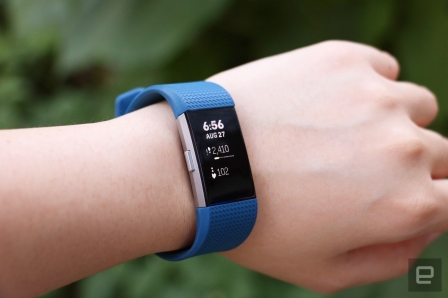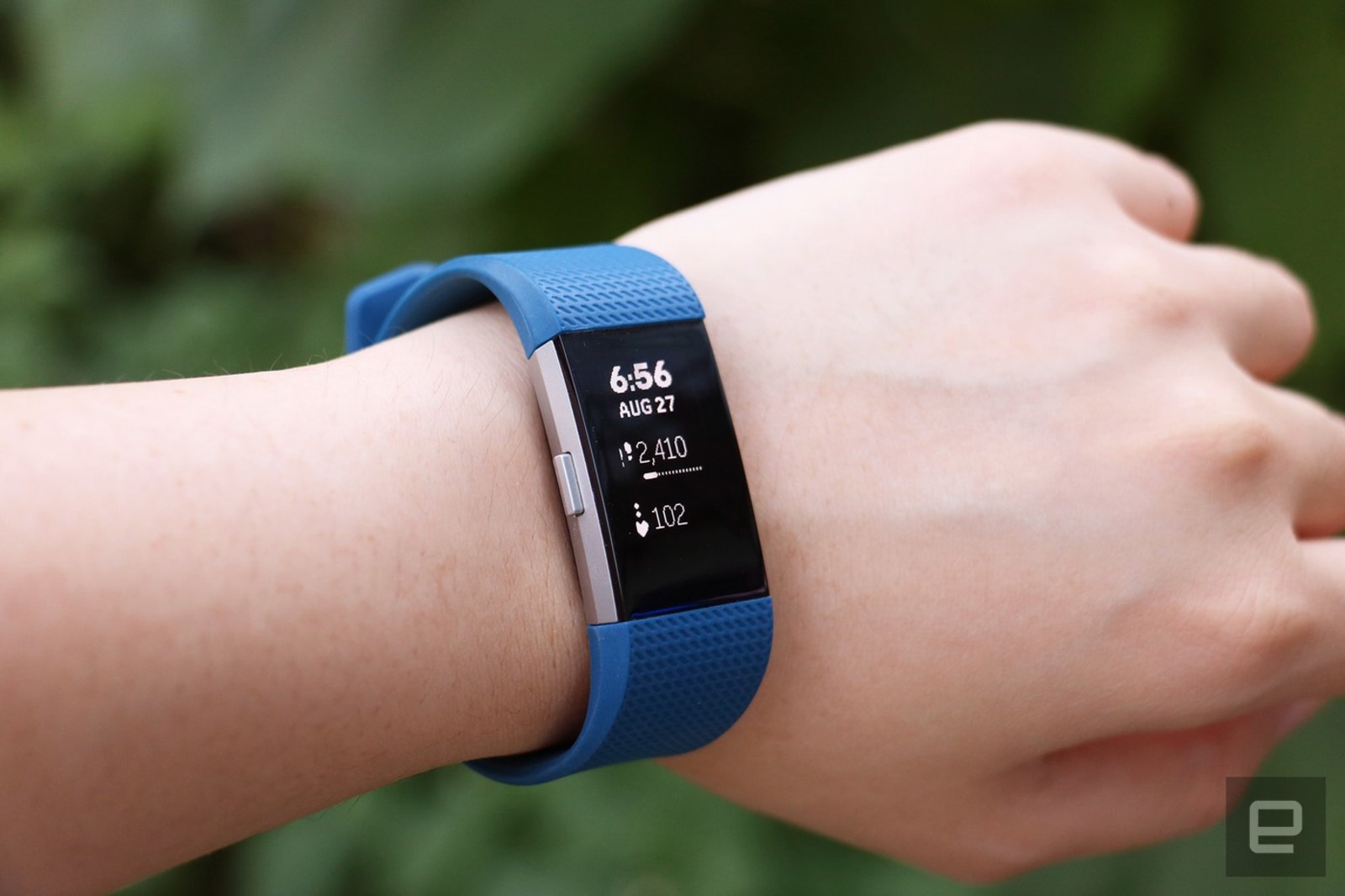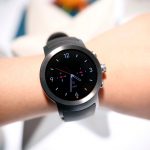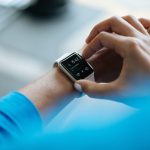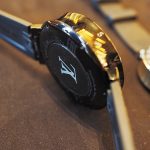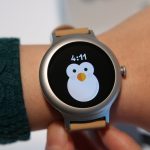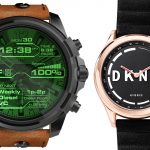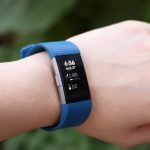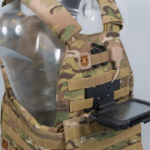Fitbit’s new Charge and Flex track every type of workout
It’s no surprise that Fitbit’s been planning a major update to its fitness trackers. And about time, too. The two-year-old Charge and three-year-old Flex are in dire need of a tune-up to help the company maintain (or grow) its narrow lead in the industry, after it lost a significant amount of market share to newer rivals. As a result, the new Charge 2 and Flex 2 boast a decent set of aesthetic and functional upgrades that could help take on the competition, including specific workout tracking (finally) and guided breathing exercises.
Gallery: Fitbit Charge 2 hands-on | 9 Photos
Despite the improvements, the Charge 2 and Flex 2 will cost the same as their predecessors when they arrive this fall: $150/£130 and $100/£80 respectively. I’ve been wearing preview versions of both new trackers for a few days and while I’m impressed by the improved functionality, I still wish they didn’t look so… Fitbit.
Cosmetically, the biggest change to the Charge is its screen size. The Charge 2’s display is four times larger than the original. Instead of one thin horizontal strip near the top of the band, you now get a much more useful oblong that takes up nearly all of the device’s front. It looks like a more blocky Gear Fit 2.
This extra screen space allows for a selection of watchfaces that can display more useful information at a glance than before. I picked one that showed the time, steps taken and current heart rate whenever I lifted my wrist — which more than satisfied my endless desire to know how my ticker was doing.
That heart rate sensor is one of the biggest appeals of the Charge 2 and its predecessor. Fitbit’s “PurePulse” optical HR sensor and app combo can tell you how much time you have spent in specific cardio zones. In the past few days, the app said I spent most of my activity in Fat Burn, and some time in the Cardio and Peak zones.
Gallery: Fitbit Charge 2 product gallery | 13 Photos
Cardio zone information is useful for those who are serious about their fitness, but not so much for the average sidewalk slogger. To make the feature more meaningful for the rest of us, Fitbit’s added a Cardio Fitness Score component that lets you gauge your heart health against people of your age range and gender. Luckily for my ego, it turns out my resting heart rate is considered average to fair for women my age. Sorry to those of you who fall below average on this curve.
Steps are forgettable, but seeing my heart’s performance right there actually spurs me to do something about my health. It’s this type of personal info that will ultimately keep me wearing the Charge 2. But the new tracker isn’t just there for your workout. It’ll help you recover after. Fitbit implemented a new Guided Breathing mode that, like other stress-fighting wearables, will coach you through breathing exercises to help you wind down.
It’s a well-intentioned feature that’s quite poorly executed. You get the option of two- or five-minute sessions that you launch from your wrist. During these sessions, you’ll have to look at the screen, inhaling when a circle expands, exhaling when it contracts. Throughout this, the Charge is measuring your pulse to tell how quickly and deeply you should be breathing.
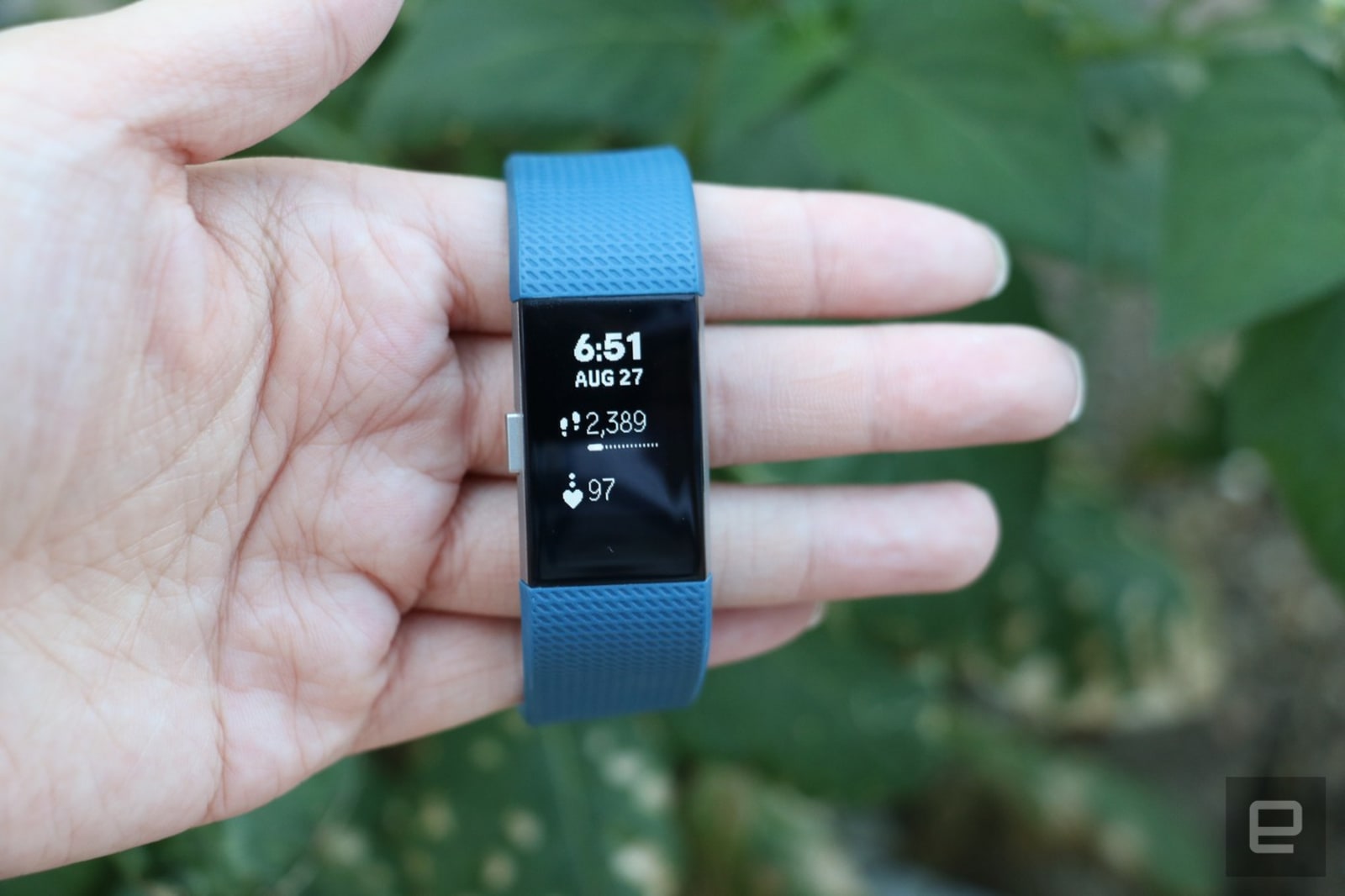
Maybe I should be more fit than I am right now, but holding up my arm for two (not to mention five) whole minutes while trying to breathe in sync with the Charge was more strenuous than it should be. I couldn’t comfortably see the circle unless I held the my wrist up in front of me, and the device had to be on me to detect my pulse. Fitbit could easily put this tool in the app to let audio guide you and still have the tracker send heart rate information to your phone.
Other Charge improvements include auto exercise recognition and multi-sport tracking to record more meaningful data for specific workouts such as running, biking and weights. The wearable can now tap your phone’s GPS to show stats such as pace and distance in real time, as well as save a map of your route to the app. The Charge 2’s battery lasted about three days on a half charge, which is similar to the Charge HR’s touted five-day endurance. The new-gen tracker also maintains its sweat and rain resistance. A lot of the abovementioned features already exist in other trackers, however, so Fitbit isn’t doing anything really groundbreaking.
Many of these tools — such as auto exercise recognition and auto sleep tracking — are also available in the Flex 2, which got quite a major redesign. Instead of looking like a smaller, thinner Charge with a horizontal row of LED lights at the top, the new Flex looks more like a Jawbone Up or Misfit Ray, with a more rounded, cylindrical tracker housed in a narrower band.
Gallery: Fitbit Flex 2 hands-on | 8 Photos
I really don’t have much to complain about the Flex 2. It’s now swim-proof so you can use it to record laps at the pool or keep it on in the shower if you wish. During my time with it, the Flex 2 was comfortable and accurately measured my activity and sleep, which is all its target audience would really care about anyway. The most interesting change for the Flex 2 is the set of attractive, interchangeable metal and leather accessories that it will launch with.
Although the new trackers still adhere pretty much to the brand’s familiar “Fitbit” shape, I applaud the company for at least knowing the importance of a wearable’s design. It has partnered with fashion houses such as Tory Burch, Public School and Vera Wang to make better-looking accessories to up its sartorial appeal. I also love the upcoming new finishes and bands for the Alta and Blaze, which definitely earn the company some style points.
Gallery: Fitbit Flex 2 product gallery | 32 Photos
Unfortunately, Fitbit has failed to impress me aesthetically. Even though its new bangle and necklace cases for the Flex 2 are prettier than Misfit’s similar accessories, Fitbit is simply playing “Who Wore It Better” with its competitors. As an industry leader, Fitbit could easily be setting trends, but it seems to be lagging.
Beyond aesthetics, the Charge 2 and Flex 2 are decent, well-rounded fitness trackers that seem to do what they promised. But there are plenty of other companies out there that do the same, or maybe even better. Fitbit doesn’t only have to contend with the likes of other fitness brands such as Jawbone, Misfit, Nike or Garmin, but also powerhouses such as Samsung, Microsoft and Apple. Even the upcoming series of Pebble smartwatches for 2016 focus on fitness, promising to do what the Charge 2 can and more. Fitbit needs to prove it can do better than its rivals if it hopes to recoup its lead in the game, and the new Charge and Flex just don’t seem to be enough.
(114)

